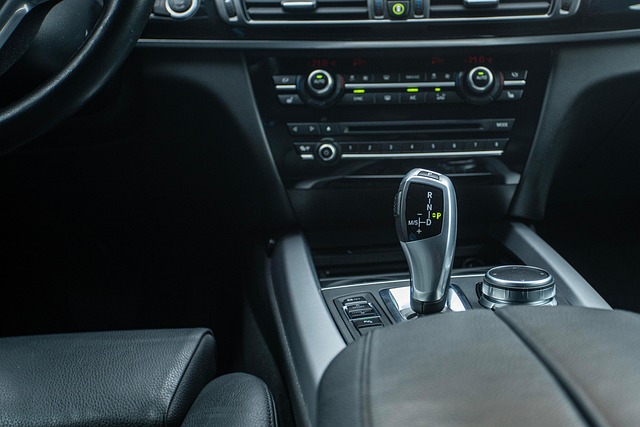Registering a car in California involves understanding specific requirements and gathering essential documents. This comprehensive guide walks you through the entire process, from confirming vehicle identity using a DMV VIN verifier to paying registration fees and obtaining license plates. By following these steps, you’ll ensure your vehicle is legally registered and road-ready in the Golden State.
- Understand California Car Registration Requirements
- Gather Necessary Documents for Registration
- Visit Your Local DMV: Step-by-Step Process
- Verify Vehicle Identity Using VIN (DMV Service)
- Pay Registration Fees and Obtain License Plate
Understand California Car Registration Requirements

Before registering your car in California, it’s crucial to understand the state’s specific requirements. The California Department of Motor Vehicles (DMV) mandates that all vehicles operating within the state be properly registered and have a valid inspection certificate. This process involves several key steps, including verification of your vehicle’s identification number (VIN). A reliable VIN verifier, such as those provided by the DMV or third-party services, ensures accuracy and complies with legal standards.
California also requires that vehicles undergo a safety inspection to ensure they meet state safety standards. This includes checking critical components like brakes, lights, tires, and emissions systems. For convenience, many Californians opt for mobile VIN inspections and verifications, allowing them to complete these essential steps without visiting a DMV office. These services are readily available and often provide quick turnaround times, making car registration a seamless experience.
Gather Necessary Documents for Registration

Before heading to the California DMV, make sure you have all the essential documents for car registration. This includes your vehicle’s registration certificate from the previous state (if applicable), proof of insurance, a valid driver’s license, and the title or bill of sale for the car. One crucial step is to obtain a Vehicle Identification Number (VIN) verification report using a reliable DMV VIN verifier or even a mobile vin verifier. This process ensures that your vehicle’s history is clean and helps prevent fraud.
Additionally, you might need a completed Form SV-15, which is the Application for Title and Registration, along with any required fees. A mobile vin inspection can be a convenient way to verify your car’s details before visiting the DMV, saving you time and potential hassle during the registration process.
Visit Your Local DMV: Step-by-Step Process

To begin the process of registering your car in California, the first step is to visit your local Department of Motor Vehicles (DMV) office. This can be done by scheduling an appointment online or showing up during their operational hours. Upon arrival, you’ll need to bring along several key documents, such as proof of ownership, vehicle identification number (VIN) verification, valid identification, and any required fees.
The DMV staff will guide you through the registration process, which involves completing necessary forms and providing detailed information about your vehicle. They may also perform a VIN inspection to ensure the accuracy of the car’s identification number. Alternatively, many services now offer mobile vin verification, allowing for a more convenient and potentially faster option right at your location or even online.
Verify Vehicle Identity Using VIN (DMV Service)

Before registering your car in California, it’s crucial to verify the vehicle’s identity using its unique Vehicle Identification Number (VIN). This process ensures that the DMV can accurately match the details of your car and issue a valid registration. You can utilize the DMV’s online VIN verifier service, which allows you to cross-reference the VIN with official records to confirm its authenticity and history.
A mobile VIN verifier is also an option available to California residents. These tools enable users to input their VIN and access detailed information about the vehicle, including its make, model, year, and potential safety recalls or issues. This added layer of verification can be particularly useful when purchasing a used car, ensuring that you’re making an informed decision.
Pay Registration Fees and Obtain License Plate

After completing your vehicle’s registration application at the California DMV (Department of Motor Vehicles), the next step is to pay the registration fees. These fees vary based on the type of vehicle and its use, so be sure to check the official DMV website or consult a representative for accurate information. You can typically pay online, by phone, or in person using cash, credit card, or debit card. Once your payment is processed, you’ll receive your registration documents and will be ready to obtain license plates.
Obtaining license plates involves presenting your completed registration paperwork and paying an additional fee for the physical tags. The DMV offers both standard and custom license plate options, allowing you to choose a design that suits your preferences. If you prefer a more convenient approach, consider using a mobile VIN inspection service or a mobile VIN verifier, which can streamline the process by verifying your vehicle’s information and handling the paperwork remotely.
Registering a car in California involves understanding specific requirements, gathering essential documents, and visiting your local DMV. By following these steps, including verifying vehicle identity using a DVV (DMV Vin Verifier), paying registration fees, and obtaining license plates, you can ensure your vehicle is legally registered and ready to hit the road. Remember to keep all necessary paperwork updated for smooth future transactions with the DMV.
